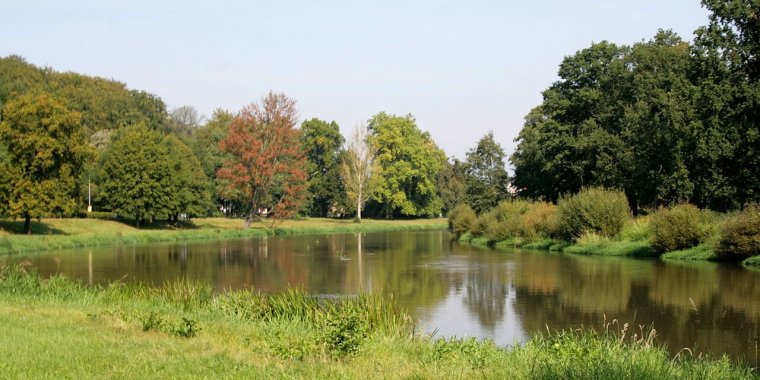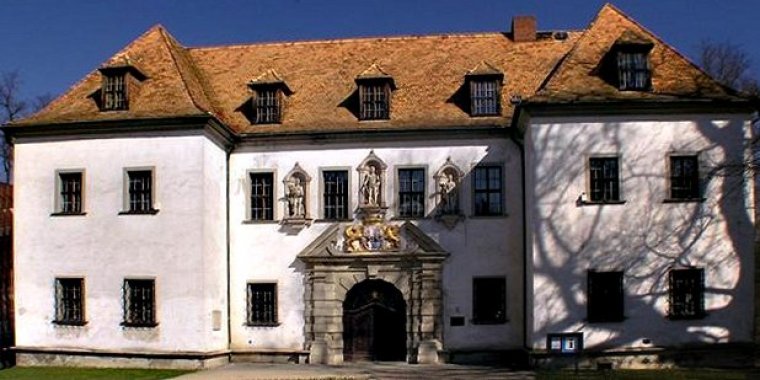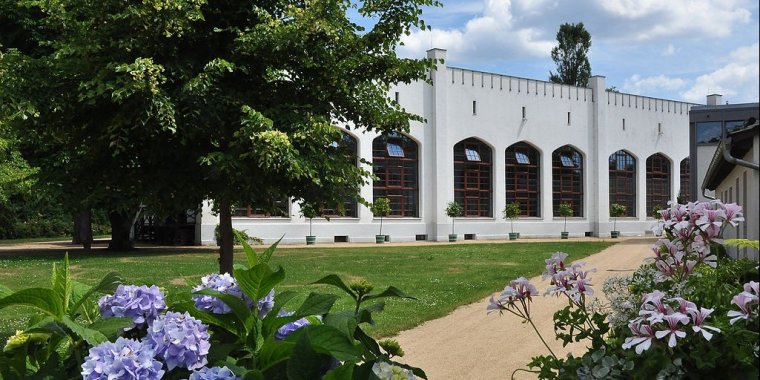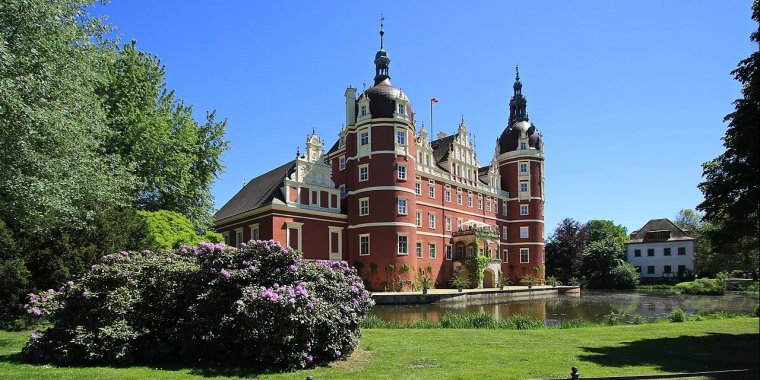| Published in Attractions / Places of Interest |
Muskau Park, Germany
The park covers 3.5 square kilometers (1.4 sq mi) of land in Poland and 2.1 km2 (0.81 sq mi) in Germany. It extends on both sides of the Neisse, which constitutes the border between the countries. The 17.9 km2 (6.9 sq mi) buffer zone around the park encompassed the German town Bad Muskau (Upper Sorbian: Mužakow) in the West and Polish Łęknica (Wjeska, former Lugknitz) in the East.
While Muskau Castle is situated west of the river, the heart of the park is the partially wooded raised areas on the east bank called The Park on Terraces. In 2003 a pedestrian bridge spanning the Neisse was rebuilt to connect both parts.
A fortress on the Neisse at Muskau was first mentioned as early as the 13th century under the rule of Margrave Henry III of Meissen. The founder of the adjacent park was Prince Hermann von Pückler-Muskau.
As time went by, he established an international school of landscape management in Bad Muskau and outlined the construction of an extensive landscape park which would envelop the town "in a way not done before on such a grand scale".
The works involved remodelling the Baroque "Old Castle" - actually a former castle gate - and the construction of a Gothic Revival chapel, an English cottage, several bridges, and an orangery designed by Friedrich Ludwig Persius.
Pückler reconstructed the medieval fortress as the "New Castle", the compositional centre of the park, with a network of paths radiating from it and a pleasure ground influenced by the ideas of Humphry Repton.
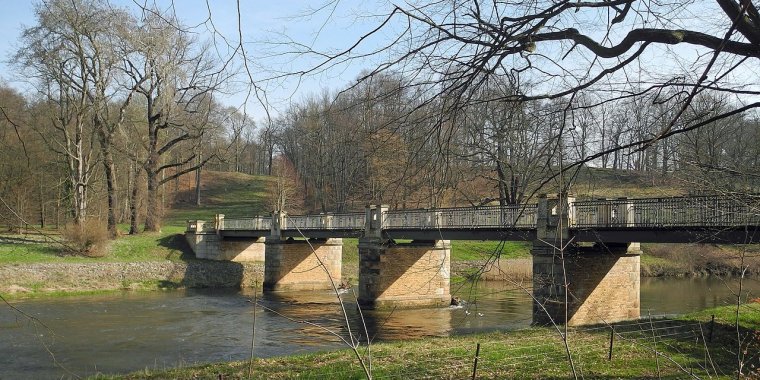
The English Bridge over the Neisse. ![]()
New Castle (Neues Schloss) is an innovative, multi-faceted and comprehensive exposition on the erstwhile lord of the manor, Prince Hermann von Pückler-Muskau, dedicated to his different roles (ruler, adventurer, landscape artist, writer, bon vivant).
With several interactive options (like a "love letter machine" that automatically writes a suitable love letter after you tweak some settings—Pückler has written thousands of letters, sometimes using recurring, only slightly varied text modules), lovingly designed animations and displays, short film scenes as well as little audio plays and texts recited by actors.
While some of the stations might only unfold their whole allure if you have some knowledge of German language and culture, most of the texts are also available in English, and the activities are simply fun, no matter what language you speak. April–October 10AM-6PM. Admission € 6, reduced € 3.
The park is open daily, all year, admission is free. From April to October there are public guided tours of the park (1½ to two hours) each Saturday, Sunday and public holiday at 2PM. Meeting point is at the tourist centre in the New Castle, costs € 4 per person.
There is another tour all year, each Saturday at 2PM, starting from the Kulturhotel and mainly targeting spa and hotel guests (same price).
Two thirds of the park are on the Polish side of the border. Both parts are linked by bridges that may be crossed without border controls (but you have to carry your passport or ID card). (Wikipedia, Wikivoyage)
YOU MAY ALSO LIKE





 If you own or manage a travel-related business such as a hotel, a bed-and-breakfast, a restaurant, a pub or a cafeteria, you can create a web page for your business for free on Titi Tudorancea Travel Info. » |
